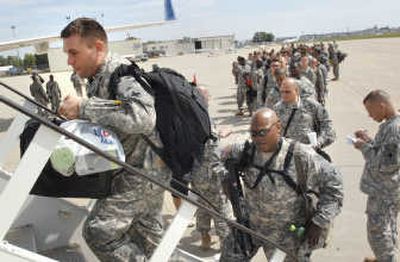Pentagon worried by surge of violence in Afghanistan

WASHINGTON – Insurgent activity is increasing sharply in Afghanistan and has spread into once stable areas, with attacks up almost 40 percent in the eastern provinces alone, according to new American military data that has prompted alarm among senior Pentagon officials.
Rising attacks against Afghan and NATO troops in the east represent the latest in a series of troubling developments that have led to markedly higher U.S. casualties and have prompted the military’s top leadership to order a review of its strategy.
The new data, disclosed by Army Maj. Gen. Jeffrey J. Schloesser at a Pentagon news conference Tuesday, covered the first five months of the year in an area of Afghanistan that has repeatedly been cited by senior Pentagon officials, including Defense Secretary Robert M. Gates, as a success story. A similar assessment presented by Schloesser to top Pentagon brass in recent weeks about attacks by Islamic extremist groups sent shock waves through the department, a senior military officer said.
Schloesser, the recently appointed U.S. commander in eastern Afghanistan, said attacks in the region adjacent to largely lawless areas of Pakistan are also becoming increasingly sophisticated, and blamed them for a growing number of casualties. So far this year, 50 Americans have been killed in combat in Afghanistan, compared to 28 killed through the end of June last year.
“Folks at all levels are really taking a hard look at those statistics and saying, ‘What are they telling us?’ ” said the senior military officer, who spoke on the condition of anonymity because he was not authorized to talk publicly on Afghan strategy.
The troubling numbers come after a period of increasing distress on the part of military officials about the deterioration of security in Afghanistan, where the Taliban, which had harbored al-Qaida, was ousted by U.S.-led forces in late 2001. Navy Adm. Michael G. Mullen, chairman of the Joint Chiefs of Staff has spent time in recent months attempting to refocus attention inside the Pentagon and on Capitol Hill to the Afghan war.
Mullen has repeatedly expressed frustration that NATO allies have not provided the numbers of troops needed to wage a complex counterinsurgency campaign. He also has expressed concern that the U.S., with continuing heavy commitments in Iraq, has not mustered the three brigades, or about 10,000 troops, that commanders believe are needed to fill the gap.
“Violence is up this year by every single measure we look at,” Mullen told members of his staff at a public meeting Monday.